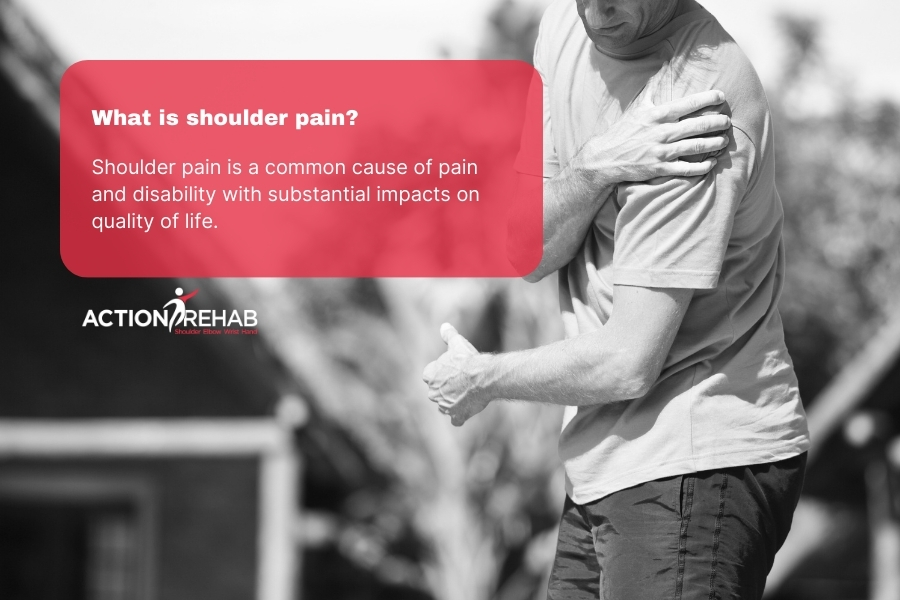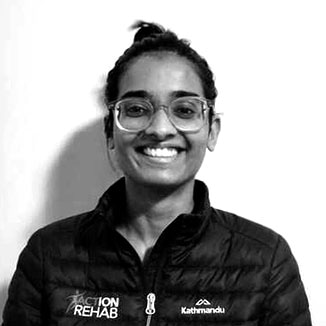What is shoulder pain?
Shoulder pain is a common cause of pain and disability with substantial impacts on quality of life.1The long head of biceps brachii tendon (LHBT) is one of several structures frequently implicated in shoulder pain. Pathologies of the LHBT mainly results in anterior shoulder pain, which may be associated with decreased shoulder range of motion.1 LHBT pathologies commonly include tendinopathy, superior labrum anterior and posterior (SLAP) lesions, pulley tears and tendon instability.1
Function
The exact function of the LHBT remains poorly understood.1,2 It is predominantly described as a stabilizer of the humeral head.2 Despite this, studies have demonstrated minimal activity in the tendon, with isolated shoulder motion.1,2 It has therefore been touted that the stabilising effect of the LHBT may be associated with elbow flexion and forearm supination.1,2 However, no definitive conclusions exist.
Structure
It likely that the anatomy of the LHBT may lend answers to its role as a common pain generator in the shoulder (Figure 1). The tendon consists of an intra-articular and extra-articular portion. 1,2 The intra-articular portion inserts into the superior labrum and supraglenoid tubercle of the glenoid labrum.1,2 The tendon’s synovial sheath is an extension of the shoulder joint synovium, meaning that it shares the inflammatory processes that effect the rotator cuff tendons.1,2 From here, the LHBT angles 30 degrees to leave the joint.1 The extra-articular portion passes under the reflective pulley and enters the bicipital groove, which is shaped like an hourglass, being narrowest in the middle.1,2 The pulley stabilises the tendon in the groove and is composed of coracohumeral ligament, superior glenohumeral ligament, supraspinatus and subscapularis tendon. 1,2
As outlined above, the LHBT lives within a constrained environment, which renders it vulnerable to injury. As a result, the LHBT is subject to various forces including shear, compressive, tensile and torsional strain.4 Any acute or chronic increase in these forces can lead to tendinopathy of the LHBT.3 However, isolated tendinopathy of the biceps tendon is rare, and is only seen in 5% of patients.1,3 Rather, LHB tendinopathy is typically a secondary feature related to other shoulder injuries, some of which are listed below. 1,3
Rotator cuff disease and LHBT
Anatomically, the rotator cuff and LHBT are intimately related, sharing a synovial sheath.1,2Given this, LHBT can become inflamed secondary to the inflammation of the rotator cuff. The prevalence of a healthy LHBT is shown to be 47%, 20% and 8% in patients with small, large, and massive rotator cuff tears, respectively.4 The LHBT was also not present in 31% of patients with large rotator cuff tears.4
Pulley Instability and LHBT
There is Level II evidence suggesting injury to the pulley system nearly always results in an unstable and inflamed LHBT. 5 Typically, subscapularis tendon tears lead to the medial subluxation of LHBT, given subscapularis acts as a medial stabiliser in the bicipital groove.5 In fact, 90% of subscapularis tendon tears have an associated unstable LHBT.5 Further movement of the tendon, through internal and external rotation of the arm, can lead to ongoing irritation of the already subluxed LHBT.5
SLAP lesions
SLAP lesions are hypothesised to occur due to repetitive microtrauma, especially with overhead motion, or during an acute traumatic traction event or fall on the arm.1,6 The superior labrum and biceps anchor can be damaged acutely or gradually peeled off the glenoid, with these types of injuries.6 Overloading or underloading the tendon can further destabilise this attachment.7 Age can be an important factor, with over 40s likely to rupture the tendon while under 40s more likely to take the superior glenoid labrum off. 7
Summary
The LBHT is an important pain generator in the shoulder, that can cause significant pain and disability. Despite it being known as a shoulder stabiliser, further evidence is required. Structurally, the LHBT lives in a compact environment with close connection to other shoulder structures, and this may explain its role in shoulder pain. Isolated LHBT pathology, such as a tendinopathy only occurs in 5% of the population with majority of LHBT pathology being a symptom of other shoulder injuries. There is strong association between rotator cuff disease, pully instability/tears, SLAP lesions and having a LBHT pathology.
References
- Longo UG, Loppini M, Marineo G, Khan WS, Maffulli N, Denaro V. Tendinopathy of the tendon of the long head of the biceps. Sports Medicine and Arthroscopy Review. 2011 Dec 1;19(4):321-32.
- Pill SG, Walch G, Hawkins RJ, Kissenberth MJ. The role of the biceps tendon in massive rotator cuff tears. Instructional Course Lectures. 2012 Jan 1;61:113-21.
- Raney EB, Thankam FG, Dilisio MF, Agrawal DK. Pain and the pathogenesis of biceps tendinopathy. American Journal of Translational Research. 2017;9(6):2668.
- Candela V, Standoli JP, Carbone S, Rionero M, Gumina S. Shoulder Long Head Biceps Tendon Pathology is associated with increasing Rotator Cuff tear size. Arthroscopy, Sports Medicine, and Rehabilitation. 2021 Oct 1;3(5):1517-23.
- Godenèche A, Nové-Josserand L, Audebert S, Toussaint B, Denard PJ, Lädermann A. Relationship between subscapularis tears and injuries to the biceps pulley. Knee Surgery, Sports Traumatology, Arthroscopy. 2017 Jul;25(7):2114-20.
- Varacallo M, Mair SD. Superior Labrum Anterior Posterior (SLAP) Lesions. StatPearls. 2019 Mar 12.
- Clinical Edge. Anterior shoulder pain, long head of biceps and SLAP tears with Jo Gibson. [Podcast transcript on the internet]. 2022. Available from: https://www.clinicaledge.co/podcast/physio-edge-podcast/097/transcript
- The Rotator Interval and Long Head Biceps Tendon: Anatomy, Function, Pathology, and Magnetic Resonance Imaging, [Internet]. Radiology Key. 2017 Sep 18 . Available from: https://radiologykey.com/the-rotator-interval-and-long-head-biceps-tendon-anatomy-function-pathology-and-magnetic-resonance-imaging/





















